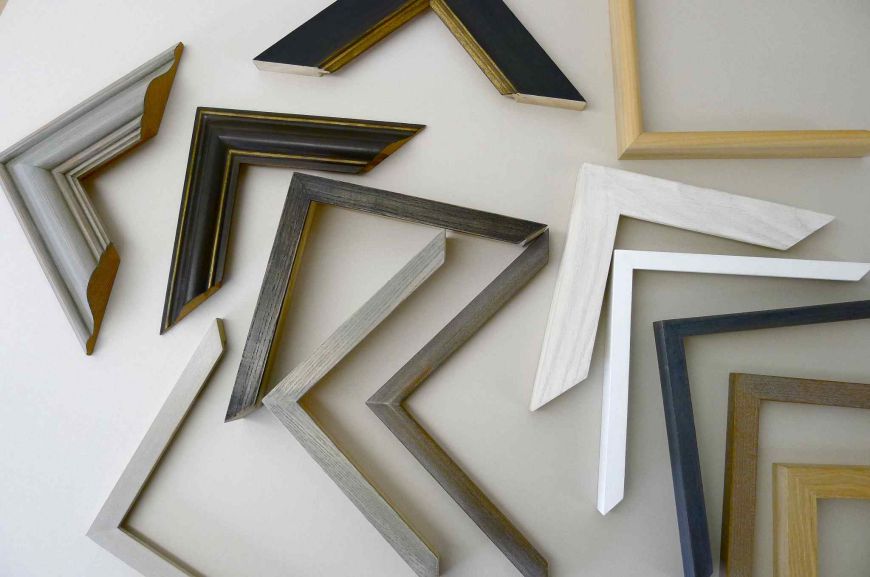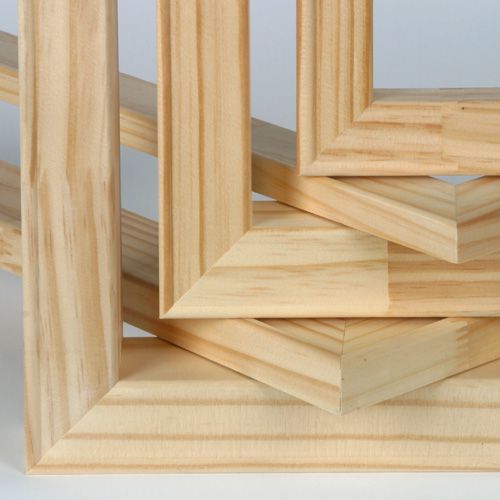How Frames Can Change a Piece of Artwork
- 14 May 2016
- Sarah Holden
Have you ever considered that there is more to frames than meets the eye? Frames are the finishing touch to a piece of artwork. They are the setting for the diamond and as such, they complete the artwork and help present it in the best possible light to the viewer. A frame should compliment a work of art and with a good choice of frame, considerably enhance the appearance of the artwork and a poor choice diminishing both the appearance and value of the artwork.
How to choose the right frame type
Foremost when choosing a frame, the work of art itself should be considered. The style of the art can help to suggest which type of frame should be used. A period or classical subject painting is more suited to a formal and traditional frame, such as a gold leafed or mahogany wooden frame. More contemporary artwork can suit a simpler and more modern frame.
However, there is no hard and fast rule, allowing owners to mix and match frame types according to the environment the artwork will be displayed in. Consideration can also be given to personal tastes and if you require the frame to match others near where it will be displayed.
Many frames also include mat boards. Matting increases the size of the artwork and therefore the frame size too. Both single and double matting offer different visual choices to the eye and also the chance to include a splash of colour. Both the mat and the frame should different sizes, with the mat being the larger of the two. Weighting of the mat, making the bottom piece larger than the top and sides, helps to provide a visual balance when the work is hung on a wall.
At The Little Gallery most of the work is framed in white with a white mount. This type of framing suits modern work as it doesn't distract from the work and make it too busy and confusing. It is there to protect the work and leave your eye to travel through the painting.
Does artwork need to be framed?
Not all pieces of artwork require framing. Gallery-wrapped artwork refers to the contemporary style of canvas tightly wrapped around a wooden frame and secured at the back with tacks or staples. Often artists who create work with this medium will often continue the art around the sides of the canvas or paint the edges black.
Frames do play a part in helping to support and protect the artwork itself though. While canvas art is quite sturdy, artwork on paper, thin board or non-stretched canvas requires some strengthening. Before it can be framed, it must be mounted onto a support. Nowadays conservation mounting is highly recommended and desired because it allows you in the future to remove the art from the frame without any damage and without any visual signs that it had been framed before. This is particularly important for valuable artwork.
Glass is used when framing art. It has the benefits of not only protecting the work from dirt and dust, but to also reduce the amount of UV exposure. There are four main types of glass used, each with their own advantages and disadvantages:
- Museum glass – the ideal but also costliest option. Provides exceptional UV protection and is clear and glare free.
- Regular glass – most commonly used option. Is scratch resistant but shatters easily when transported. Also only filters about half of UV light.
- Non-glare glass – offers low UV protection, but a good choice for work displayed opposite a window. Does soften the image of the artwork, giving a fuzzy appearance.
At The Little Gallery, our artists use a variety of framing techniques to enhance their work. We invite you to visit our gallery to experience their work for yourself, or scroll through our collection online.
Enjoyed this article? Sign up to our newsletter below and be the first to hear about our latest Art Chat posts!
